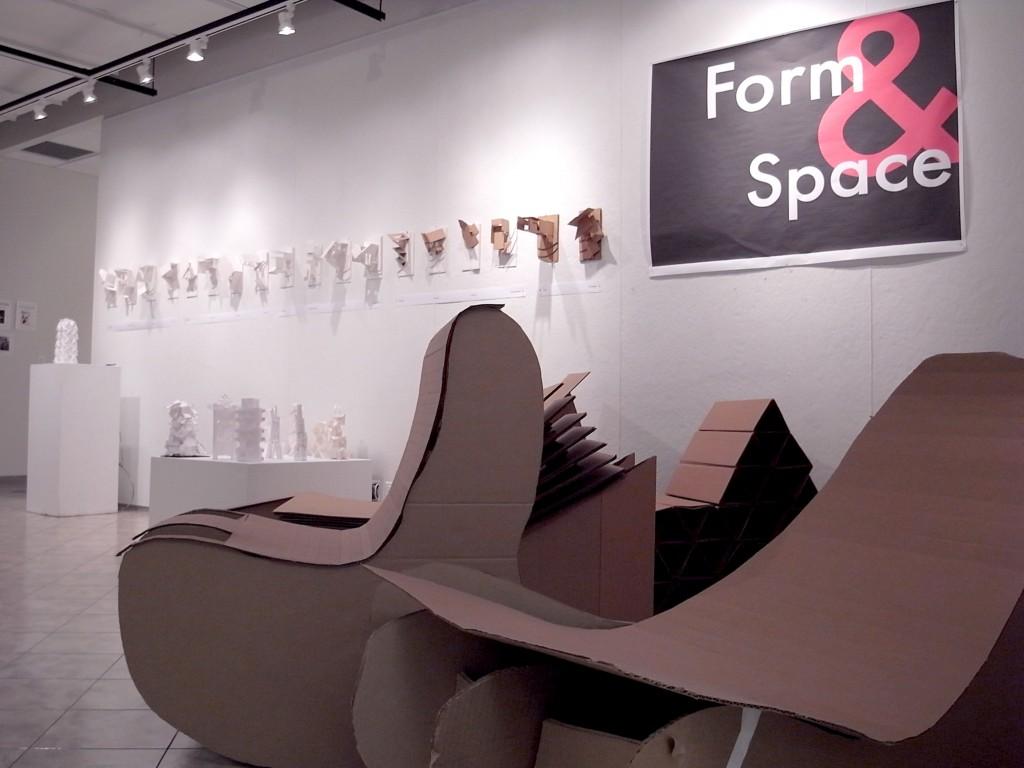Push Pin Exhibition Explores “Form and Space”
July 10, 2011

Published: April 22, 2010
Walking down the long corridor from the Lowenstein Building to McMahon Hall, it is often easy to pass the visual arts wing without turning your head to acknowledge what exactly happens back there. Only exposed by two glass doors, the falculty-curated entrance space, the Push Pin Gallery, is utilized to display the highlights of the visual arts department: the artistic works of its students.
“It is a great chance for visual arts students to display their works,” said Jackie Wong, Fordham College at Lincoln Center (FCLC) ’11 visual arts major. “After long hours of creating these models, we can be proud to show off our accomplishments.”
“Form and Space,” currently on display in the Push Pin Gallery, offers not only a look at various design projects but also a glimpse at an unfamiliar and possibly overlooked concentration at FCLC. Ironically, the work shown in this hidden gallery belongs to the small but growing population of visual arts students concentrating in architecture.
“I think it’s interesting because not a lot of people know about our architecture program here,” said Diana Kokoszka, FCLC ’12 and a visual arts major. “It’s good to have this just to show people what we are doing.”
“Form and Space” consisted of work created in architecture classes by different students ranging in level; however, the work picked is presented in a cohesive manner within the parameter of fundamental architectural concepts. From the index card towers created to hold a golf ball 12 inches above a table without any adhesive to the model bridges created to hold a small brick, but break under the pressure of two bricks, every project created in the classes was made within “an analogous set of requirements” and designed with a certain theme, according to Colin Cathcart, associate professor of architecture and curator of the current exhibition.
With “Form and Space,” aspiring architects are not only allowed to display their work, but also look at and explore the works of students in other classes. “They’re helping us because they’re inspiring us,” said Elena Lightbourn, Fordham College at Rose Hill (FCRH) ’12 and an urban studies and visual arts double major. “We’re doing the same stuff right now.”
“I hope my pieces will inspire lower level students and give them an understanding of art from a different artist’s perspective,” Wong said.
“Students at different levels will return to the same concepts that we taught in architectural language [the intro architecture course] on a more sophisticated level,” Cathcart said, explaining how the show was created using various levels of architectural design.
These students belong to an increasing population of students, and with an exhibition in the Push Pin Gallery, public audiences and fellow students can become familiar with their hard work.
“If the public can see our creativity, this program may receive more funding, more exposure, and become an even better program,” Wong said.
“It’s slow to build because Fordham defines itself as an architecture school,” Cathcart said. “I am finding that the students coming into architecture from urban concerns, environmental policy concerns [or] as a purely visual arts discipline might only be growing by one or two students a term, but it’s far more than when I arrived here 10 years ago, [when it] was essentially zero.”
“Form and Space” will become a new course offering next fall, combining architectural design language, a visual arts class, and drafting, a theatre design class.
“We found in discussing things that we have a lot more in common than you might casually think,” Cathcart said. “The main thing being that theatre designers and architects both work in form and space at the most fundamental level.”









